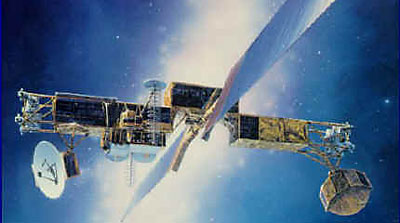Intelligence failure: spies and satellitesby Taylor Dinerman
|
| Satellites changed the nature of the intelligence game. It was no longer possible for dictatorships to easily hide all of their activities behind closed borders. |
Most knowledgeable observers seem to agree that, under the Carter Administration, the US more or less stopped trying to recruit human spies and decided to replace them with satellites. The real story is not quite that simple. In the late sixties and early seventies, the Corona series of reconnaissance satellites, which sent film canisters back to earth, were slowly replaced by the Keyhole series of satellites that digitally transmitted their pictures, thus producing far more data to be analyzed and interpreted. Later on, these were joined in orbit by radar imaging satellites, referred to as the Lacrosse series. These two programs were expensive, and the Carter Administration was willing to pay for them because they promised to be the means by which major arms control treaties, such as SALT 1, would be verified.
The intelligence community has long relied on satellites to gather both signal intelligence and electronic intelligence, which includes such functions as locating the frequencies used by enemies’ radars and intercepting radio communications for decoding. As with image intelligence, this field of spying existed long before there were satellites. Indeed, spies have been drawing pictures of enemy facilities and decoding messages for hundreds, if not thousands, of years. There is good reason to think of espionage as “the second oldest profession.”
Satellites changed the nature of the intelligence game. It was no longer possible for dictatorships to easily hide all of their activities behind closed borders. Instead, they had to learn to conceal everything they wanted to hide under cover or underground. As we discovered after the Cold War, satellites could not reveal important physical facts, such as the total number of nuclear warheads in the Soviet arsenal.
| It may well be that current technology is not up to the job, or it may be that there were other problems with the way the Iraqi WMD intelligence was gathered or interpreted. |
No modern nation on Earth can ignore the ability of imaging satellites to take pictures of places and activities that their governments may want to keep secret. Deception and camouflage are a normal part of military operations, as are attempts to see through them. There is a constant struggle between those whose job it is to hide things and those whose job it is to uncover things. Multispectral and hyperspectral imaging is making it more and more difficult to hide certain kinds of industrial processes. Satellites designed to detect and track pollution, such as ESA’s Envisat, should also have at least some capability to detect limited types of WMD activities.
It may well be that current technology is not up to the job, or it may be that there were other problems with the way the Iraqi WMD intelligence was gathered or interpreted. If the just-launched investigation looks only at problems with human intelligence and the work of the analysts, it will not have done its job. The members appointed thus far seem to be heavy on legal expertise and light on technological and scientific ability. This may be a critical weakness. It may, however, be remedied with new members, but if the commission thinks it can depend on subordinates and subcontractors to understand and explain complex detection systems, they should expect their credibility to be challenged.
The US legal system has a questionable record when it comes to using expert scientific evidence. Too much junk science has gotten into the courtroom. Robb, Silberman, and McCain, et al., have got to understand that questions about the use of scientific and technological intelligence will be just as important to their investigation as questions about which spy told what to whom. If America is over-dependent on technology for intelligence gathering, then a commission on the subject should include someone who understands how spy satellites and the other systems work.
